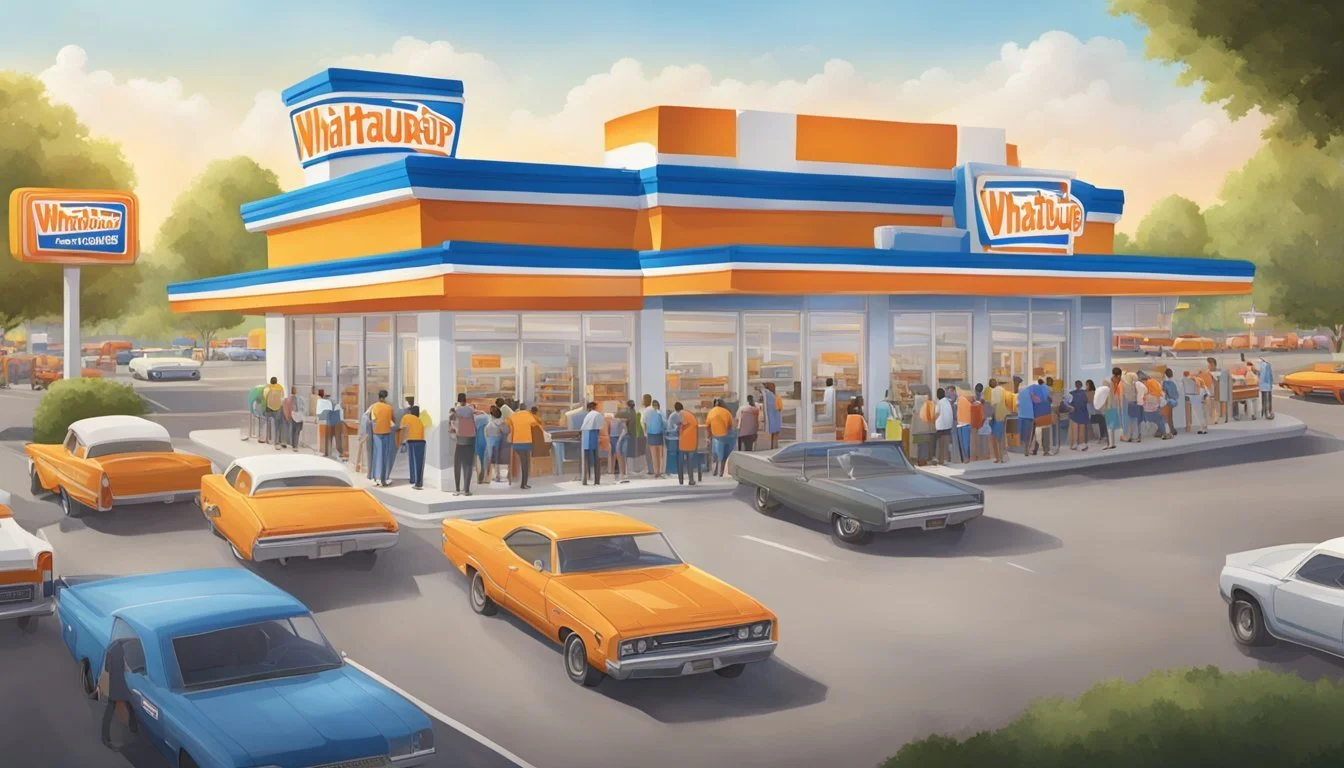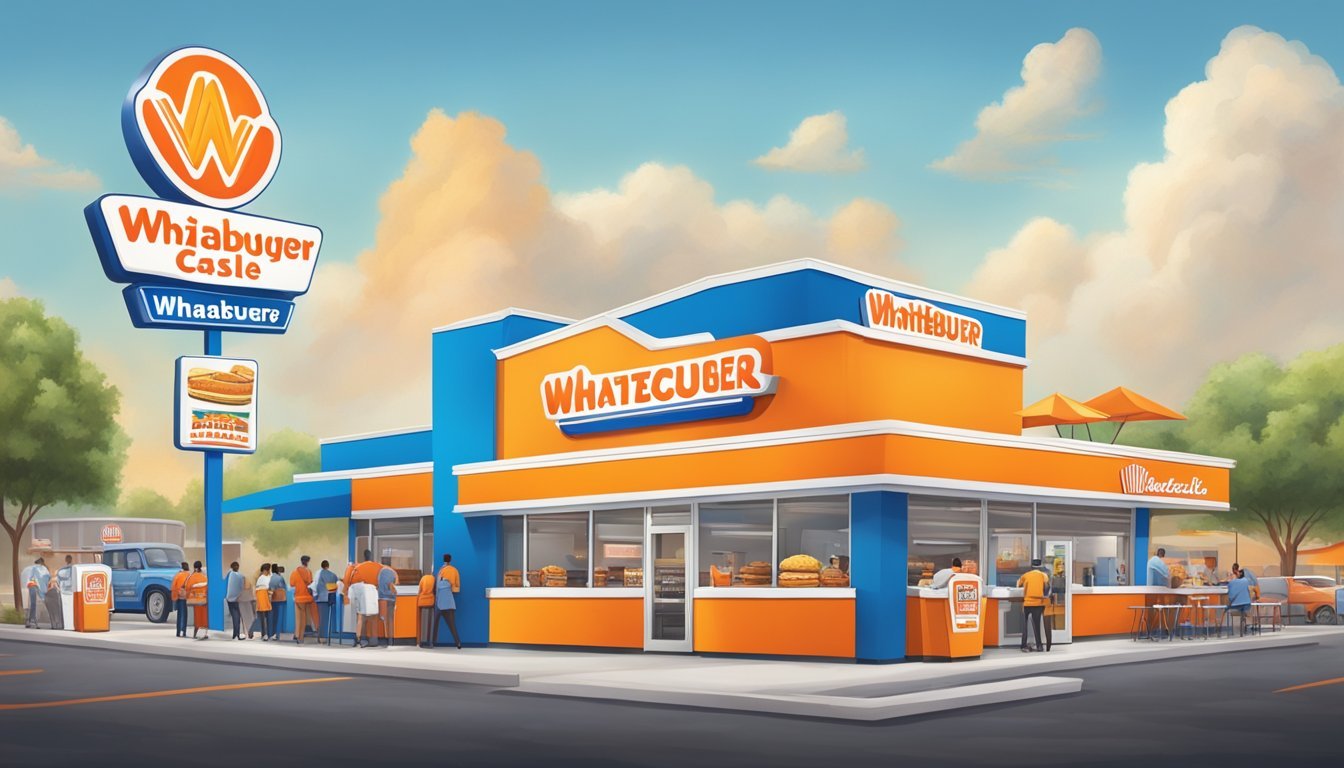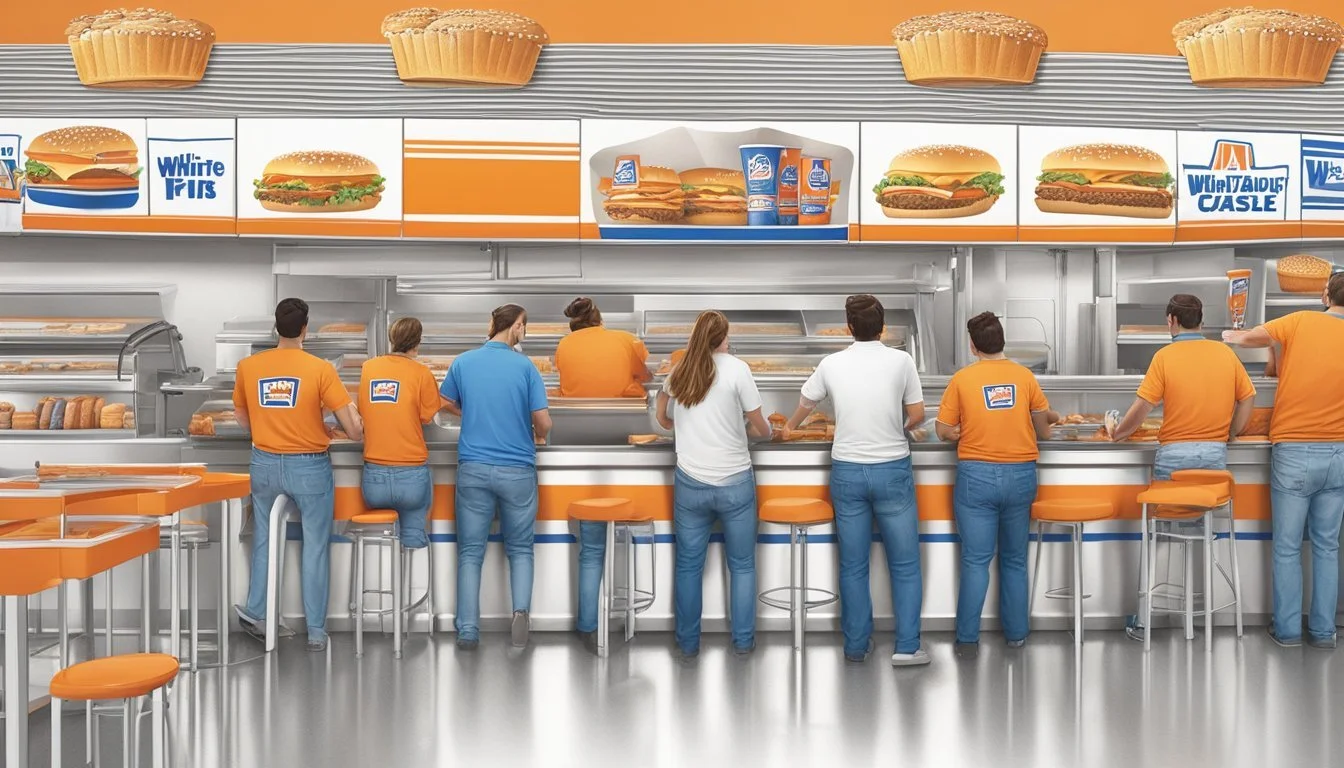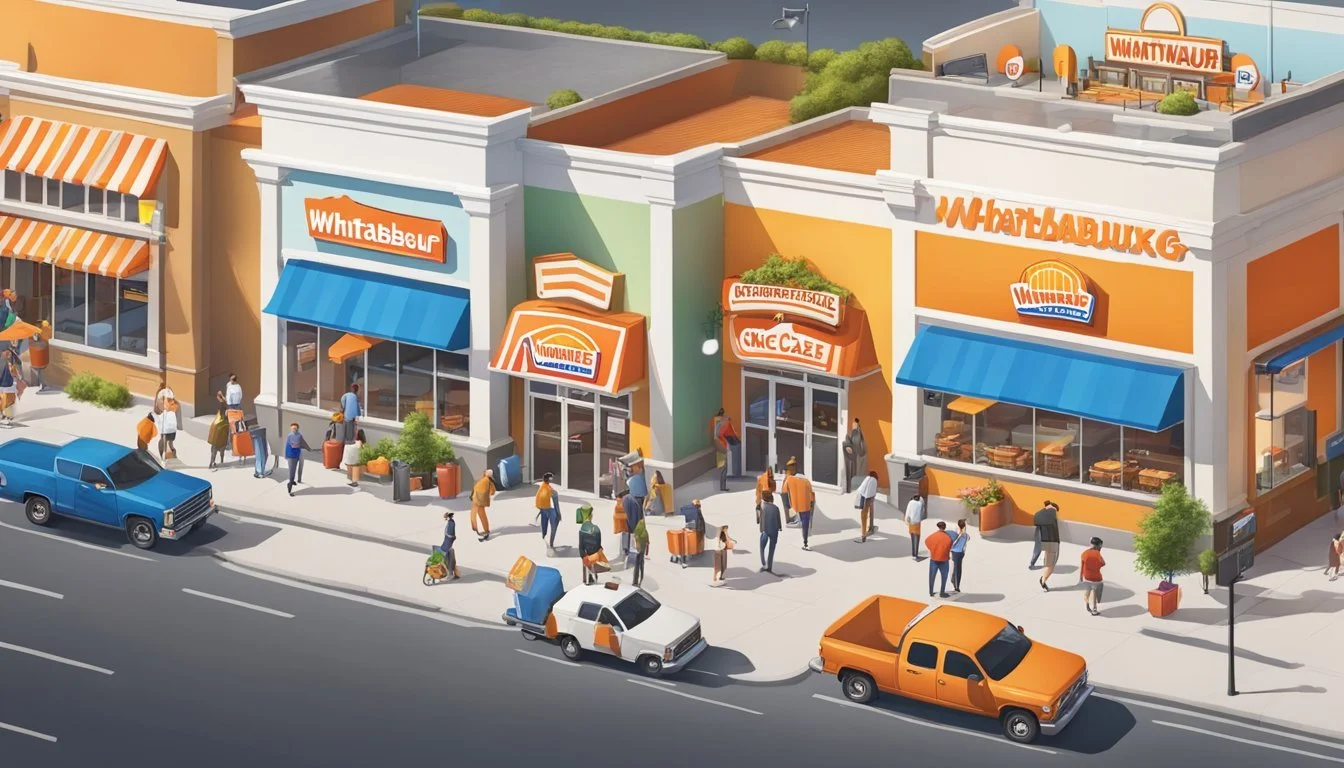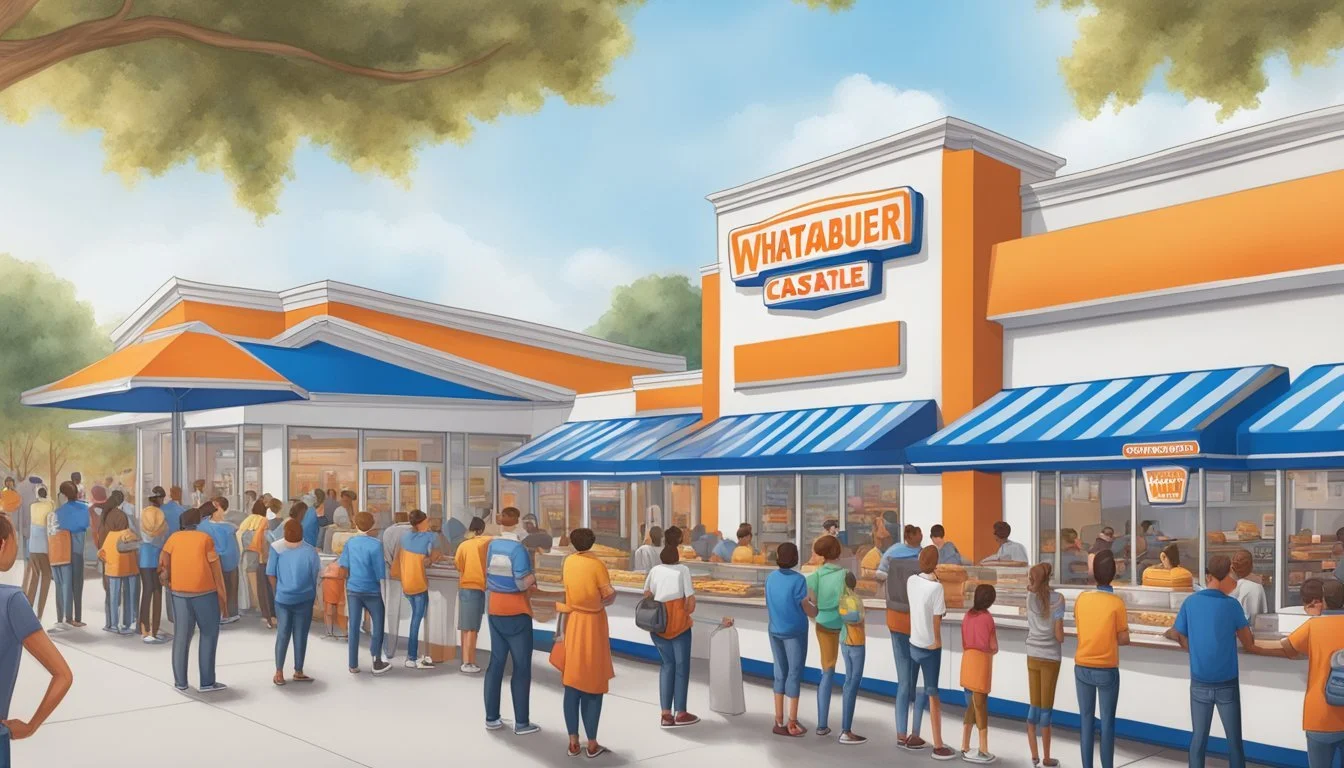Whataburger vs White Castle
The Ultimate Burger Showdown Comparison
Whataburger and White Castle offer distinctly different dining experiences that cater to various tastes and preferences. Whataburger, with its roots deeply planted in Southern tradition, is known for its classic American-style burgers, generous portions, and 24/7 service. Its menu versatility extends beyond just burgers, including options such as chicken sandwiches and breakfast items. The establishment prides itself on a retro vibe and made-to-order meals that seem to connect with the diner's idea of a hearty meal.
White Castle stands as a historic fast-food chain, famous for its small, square-shaped sliders. These bite-sized burgers are a far cry from traditional burger patties and have carved out a unique niche in the burger market. Often credited as one of the first fast-food chains in the United States, White Castle has cultivated a loyal following with its steamed burger patties that are noted for their soft buns and flavorful onions.
As two establishments with long histories, Whataburger and White Castle each have their own approach to providing fast, convenient meals. Both have built a brand around specific attributes—Whataburger's size and customization versus White Castle's unique slider format. The debate over which is the superior chain often boils down to personal preference, regional loyalty, and an appreciation for their divergent takes on what makes a satisfying burger experience.
History and Brand Evolution
In the landscape of American fast food, two iconic burger joints stand out for their distinctive histories and brand evolutions. Whataburger and White Castle have not only left a mark on the burger industry but also on America's culinary identity.
The Origins of Whataburger
Whataburger began its journey in Corpus Christi, Texas, in 1950, when Harmon Dobson had a vision to create a burger so big that it required two hands to hold. His concept was a 5-inch diameter burger, a stark contrast to the smaller burgers of the time. To achieve this, Whataburger needed special buns, leading them to work with a local bakery to produce a unique size for their needs. Dobson's desire was to provide customers with a burger that was just as memorable for its size as it was for its taste.
The Rise of White Castle
White Castle, on the other hand, has the distinction of being one of the very first fast food burger chains in America, with its beginnings dating back to 1921. The company was created in Wichita, Kansas, by Billy Ingram and Walter Anderson with an initial investment of $700. White Castle quickly became synonymous with small, square-shaped burgers, commonly known as sliders. The brand's methodical expansion and standardized designs for their outlets helped pave the way for the modern fast food industry.
Branding and Market Presence
Whataburger and White Castle have taken divergent paths in their branding and market presence. Whataburger maintains a strong identity as a Texas-sized brand, known for its larger-than-life burgers and traditional American eatery ambiance. Its presence has remained largely centered in the Southern and Southwestern United States.
White Castle, conversely, stamped its brand across America through popularizing sliders, which became a cultural staple. Its ubiquitous castle-like white building design and consistent product offering established it as a comforting presence among American consumers.
Both Whataburger and White Castle's branding efforts reflect their unique histories and contributions to the country's fast food scene, each garnering a dedicated following that persists to this day.
Menu Offerings
In comparing Whataburger and White Castle, it is essential to note the diversity of their menus. Both establishments offer a range of burgers and sides along with beverages and dessert options.
Signature Burgers
Whataburger is known for its larger, Texas-sized burgers often made with a quarter pounder patty on a five-inch bun. Their burgers often feature mustard, lettuce, tomatoes, pickles, and diced onions with the option to include or exclude other condiments. A signature item is the Whataburger Original, which sticks to the basics but does it well.
White Castle, on the other hand, has sliders as its iconic product. These small-sized burgers come with a square beef patty and are typically served with onions and pickles on a soft slider bun. The Original Slider is a classic option known for its steam-grilled beef patty on a bed of onions and served with a pickle.
Sides and Accompaniments
Whataburger offers a variety of sides including:
French fries
Onion rings
Apple slices (for a healthier option)
White Castle's side items are not as diverse but include:
French fries
Onion rings
Cheese sticks
Both restaurants provide an array of dipping sauces and condiments to complement their side offerings.
Beverage and Dessert Options
Both burger joints have a selection of sodas and milkshakes to round out their menu. Whataburger adds to the classic beverage lineup with:
Hot coffee
Iced tea
Milkshakes available in multiple flavors, including vanilla, chocolate, and strawberry
White Castle also serves basic soft drinks, along with a variety of shake flavors and other limited-time dessert options.
Quality and Taste
When comparing Whataburger and White Castle, the discourse on quality and taste centers on their use of ingredients, flavor experiences, and customer preferences.
Ingredient Selection
Whataburger distinguishes itself with freshness as a cornerstone of its offering. Their burgers are crafted with 100% pure beef patties, which are never frozen, conveying a taste of quality in each bite. In contrast, White Castle's approach is about creating the iconic slider; it uses smaller beef patties that are steam-grilled over a bed of onions. This method infuses the patties with onion flavor and keeps them moist.
Cheese and Toppings: Cheese quality at Whataburger can be described as thick and flavorsome, often melting well with the meat, whereas White Castle offers a more standardized cheese, complementing the smaller size and quick preparation of sliders. Both establishments offer a range of toppings, including lettuce, tomatoes, and pickles, but Whataburger provides more extensive customization options.
Flavor Profiles
The flavor profile of a Whataburger is typically bold and hearty. Condiments and customizations play a significant role, as customers can choose from a variety of sauces and toppings to personalize their burgers. White Castle's sliders, however, have a consistent and easily recognizable taste, with the onions and steamed buns contributing to a unique and savory flavor.
Burger King Comparison: While not the focus, it's useful to note that Burger King also prioritizes flame-grilled flavor, something that neither Whataburger nor White Castle emphasizes in their cooking method.
Customer Favorites
Whataburger has garnered a dedicated following for its customizable burgers and sizable patties, which provide a fulfilling meal. Their burger offerings lean towards the classic American burger experience, with particular praise often given to the flavor balance between their beef and fresh toppings.
White Castle's Niche: Conversely, White Castle's claim to fame lies in their signature sliders, which are favored for their small size, making it easy to enjoy in multiples. The consistent taste and unique bun have maintained a dedicated fan base that craves the distinctive slider experience.
Nutritional Value
When assessing the nutritional offerings of Whataburger and White Castle, one must take into account both health-conscious options and the caloric content of their signature items.
Health-conscious Options
Whataburger provides a variety of burgers, including options for those looking to maintain a lighter diet. One could opt for a junior-sized burger or even switch to a chicken sandwich which generally contains fewer calories and fat. White Castle, on the other hand, is known for its small-sized sliders. Their classic Original Slider is an option that is lower in both calories and carbohydrates relative to many other fast-food offerings.
Caloric Content Comparison
The caloric content of a Whataburger can differ significantly based on the burger chosen. The triple meat Whataburger, for instance, is a substantial offering that contains approximately 1070 calories. In comparison, White Castle's Original Slider contains approximately 140 calories.
Below is a comparison of two standard burgers from each establishment:
Whataburger
Item: Triple Meat Whataburger
Calories: 1070
Total Fat: 63g
Saturated Fat: 21g
Carbohydrates: 62g
Protein: 65g
Sodium: 1720mg
White Castle
Item: Original Slider
Calories: 140
Total Fat: 7g
Saturated Fat: -
Carbohydrates: 16g
Protein: 6g
Sodium: 380mg
Neither restaurant prominently features a veggie burger, but salads are available for those seeking vegetable-forward options. Both chains also offer sides like French fries and onion rings, which provide additional caloric content to consider when making a meal selection.
Customer Experience
When it comes to fast food dining, the nuances of customer experience at Whataburger versus White Castle hinge on service speed and the unique atmosphere each brand offers.
Service Speed
Whataburger prides itself on a balanced approach to service, often prioritizing order accuracy and quality over sheer speed. Given their cooked-to-order model, customers might experience a slightly longer wait time compared to other fast food chains, but they are usually rewarded with a burger that feels personalized to their tastes.
White Castle, famous for its small, square sliders, typically boasts faster service times due to a streamlined menu and a simpler, quicker cooking process. Patrons at White Castle can expect a consistent and speedy transaction, which is a core component of their long-standing service model.
Atmosphere and Branding
Whataburger:
Theme: Whataburger features a distinctive orange and white striped motif that harkens back to its 1950s roots.
Eateries: The establishments tend to be larger with spacious seating areas, embodying a traditional American diner feel.
Branding: Branding emphasizes a home-state Texas pride, which can be deeply felt in each location.
White Castle:
Theme: Recognizable for its castle-like white façades and retro design.
Eateries: Locations are typically smaller and more utilitarian, focusing on fulfilling the brand's promise of quick and convenient dining.
Branding: White Castle carries a nostalgic charm that appeals to both long-time fans and those curious about its historic stature as a fast-food pioneer.
Price and Affordability
When comparing Whataburger and White Castle, customers often consider both the value received and the price points of the menus. Whataburger operates on a made-to-order model, which means their prices may be slightly higher, but consumers often feel they receive commensurate value in terms of burger size and quality. A standard Whataburger can cost between $3 to $4 for the burger alone, with meal options pushing the price upwards of $6 to $7.
White Castle, on the other hand, is known for its small, square sliders which are generally less expensive. Customers can expect to pay around $0.72 to $1 per slider, with the option to purchase in bulk, such as a crave case, which can provide greater overall value. The ability to buy more at a lower price point often positions White Castle as more affordable for those wanting to feed a larger group or satisfy a substantial appetite economically.
It is crucial to note that both chains run periodic promotions and deals that can significantly lower the cost per visit, making both of these chains competitive in terms of affordability. Below is a brief outline of a standard meal price comparison:
Whataburger
Item: Single Burger
Price: $3 - $4
Standard Meal (Burger, Fries, Drink)
Price: $6 - $7
White Castle
Item: Single Slider
Price: $0.72 - $1 (per slider)
Standard Meal (depending on number of sliders)
Price: $2.99 - $5
In summary, while prices do fluctuate regionally, White Castle generally offers a lower entry price for its burgers, though Whataburger provides a larger, made-to-order option that many consumers associate with higher value.
Cultural Impact
White Castle and Whataburger have both greatly influenced the American fast-food scene and the cultural landscape surrounding burgers, each making its mark with distinctive advertising approaches and by shaping burger culture in the United States.
Advertising Influence
White Castle's contributions to American culture within the fast-food industry began when it opened in 1921, positioning itself as the harbinger of the hamburger craze. Its marketing strategies were pioneering for the time, fostering a perception of cleanliness and reliability that transformed American fast-food habits. They employed clear, consistent branding which has made their square sliders iconic.
Whataburger, since its inception in 1950, has cultivated a regional following into a nationwide name, in part due to its community-centered advertising. Burgers aren’t just food for Whataburger; they are a touchstone of Texan identity, as hinted by numerous promotional campaigns that appeal to local pride.
Burger Culture in America
In terms of impact on burger culture in America, both chains have carved out distinct identities. White Castle laid the groundwork for what would become an American dietary staple – the fast-food hamburger – by integrating it into the rhythm of daily life with the convenience of quick service.
Whataburger’s influence, particularly in the Southwest, shaped expectations of what a fast-food burger could be. Unlike White Castle’s uniform sliders, they offer a customizable experience reflective of a more traditional sit-down meal, despite being fast-food. This aligns with an American appreciation for both customization and speed in their dining options.
Both White Castle and Whataburger have demonstrated not only how a fast-food chain can influence eating habits, but also how deeply these habits are embedded in everyday American culture.
Consumer Loyalty and Brand Advocacy
In the competitive landscape of burger joints, consumer loyalty and brand advocacy often dictate the staying power of a brand. Whataburger and White Castle both exhibit a strong sense of customer allegiance shaped by their unique approaches to engaging with their respective audiences.
Fan Base and Community
Whataburger has cultivated a Texas-sized fan base, distinguished by its customer-focused experiences. Their loyalty rewards app significantly enhances this bond, enticing customers with exclusive offers and free items. In essence, each customer can become a potential brand advocate through their positive interactions with the brand.
Conversely, White Castle has nurtured a cult following with its iconic sliders, appealing to a sense of nostalgia and tradition. The community around White Castle often celebrates its long-standing history, resonating especially with those from regions where the brand has been a staple for generations.
Social Media Presence
Whataburger's social media strategy actively leverages platforms to maintain dialogue with their customers, sharing stories and highlighting customer loyalty. Their presence is tailored to reflect their large, diverse customer base, understanding the impact of consistent engagement on brand advocacy.
On the flip side, White Castle maintains a more iconic, heritage-focused online footprint. It taps into the emotional connection patrons have with the brand, thus galvanizing their customers to share their own White Castle stories, effectively turning them into brand advocates.
In their respective lanes, both Whataburger and White Castle demonstrate a robust understanding that customer satisfaction and engagement fuel the mechanisms of loyalty programs and brand advocacy, resulting in a dedicated customer base willing to publicly support and promote their favorite burger joint.
Innovation and Adaptability
Innovation and adaptability remain crucial factors in the fast-food industry as they not only demonstrate a brand's responsiveness to consumer preferences but also to its ability to compete effectively. Whataburger and White Castle each have their approach to evolving menus and market competition.
Menu Adaptations
Whataburger has historically focused on its diverse burger offerings, catering to a broad audience with options such as the veggie burger, appealing to the growing demand for plant-based alternatives. This addition showcases their ability to accommodate diet trends without straying from their core product line. White Castle has also embraced menu innovation by expanding into new product lines, such as their Impossible Slider, a plant-based burger that mirrors their classic sliders, providing a non-meat option for their customers.
Dealing with Competition
Both Whataburger and White Castle adapt to market competition through continuous menu updates and limited-time offerings. White Castle has generally maintained a focused menu, positioning their smaller sliders as a unique offering in a market flooded with larger burger options. This strategy gives them a distinctive niche.
Meanwhile, Whataburger faces direct competition from other large burger chains by continuously refining its menu and engaging in promotional campaigns that highlight its Texan roots and made-to-order burgers, differentiating itself through local authenticity and quality.
In addressing consumer trends and competition, both brands have shown adaptability, yet they maintain their distinct identities in a crowded marketplace.
Location and Accessibility
When considering Whataburger and White Castle, one crucial aspect that differs significantly between the two is their geographical presence and ease of access for customers.
National and Global Footprint
Whataburger primarily operates in the Southern and Southwestern regions of the United States, with its strongest presence in Texas, where it was founded. As of the latest data, Whataburger has over 800 locations across 10 states. The restaurant maintains a robust foothold in its home state and has gradually expanded to neighboring states but has not pursued a significant global expansion.
On the other hand, White Castle has a more concentrated footprint in the Midwest and some parts of the Northeastern US. It is known for its relatively smaller number of locations, with approximately 360 outlets. While both chains are iconic in their own right, neither has a considerable international presence, focusing predominantly on the US market.
Local Market Penetration
In terms of local market penetration, Whataburger shines in the southern markets with a dense network of locations, especially in Texas, where it has become a cultural staple. Its restaurants are often easily accessible in these regions and feature as a common go-to for many residents.
White Castle has etched a permanent presence in regions such as Ohio and Illinois and is considered a regional favorite. Its penetration in these local markets means that in areas where White Castle operates, it often enjoys a strong customer base loyal to its sliders and other offerings.
Conclusion and Final Assessment
When assessing Whataburger and White Castle, one must consider the distinct dining experiences they offer. Whataburger is renowned for its Texas-sized burgers and customizability, while White Castle has a legacy tied to its iconic sliders. The preferences between the two may vary by region, as Whataburger primarily dominates the South with its expansive menu, and White Castle has a loyal following in the Midwest and Northeast of the United States.
In terms of menu variety, Whataburger takes the lead, offering a wide selection of burgers, chicken sandwiches, and breakfast options. On the other hand, White Castle's menu is notably slimmer, focusing mainly on sliders but with a strong emphasis on consistency and tradition.
Whataburger
Menu Variety: Extensive
Regional Availability: Southern U.S.
Portion Size: Large
Cultural Impact: Strong in Texas
White Castle
Menu Variety: Limited
Regional Availability: Midwest/Northeast U.S.
Portion Size: Small
Cultural Impact: Historical significance
The final verdict cannot crown a definitive winner, as both chains cater to different tastes and dining preferences. Consumers seeking a hearty, customizable meal may lean towards Whataburger, while those who favor quick bites and nostalgic dining might prefer White Castle.
One could recommend trying both establishments to make an informed personal ranking. Each brand carries its own unique charm and appeals to different clientele. Thus, the dining choice may depend on one's current craving and the desire for either an extravagant burger or a quick, classic slider.

